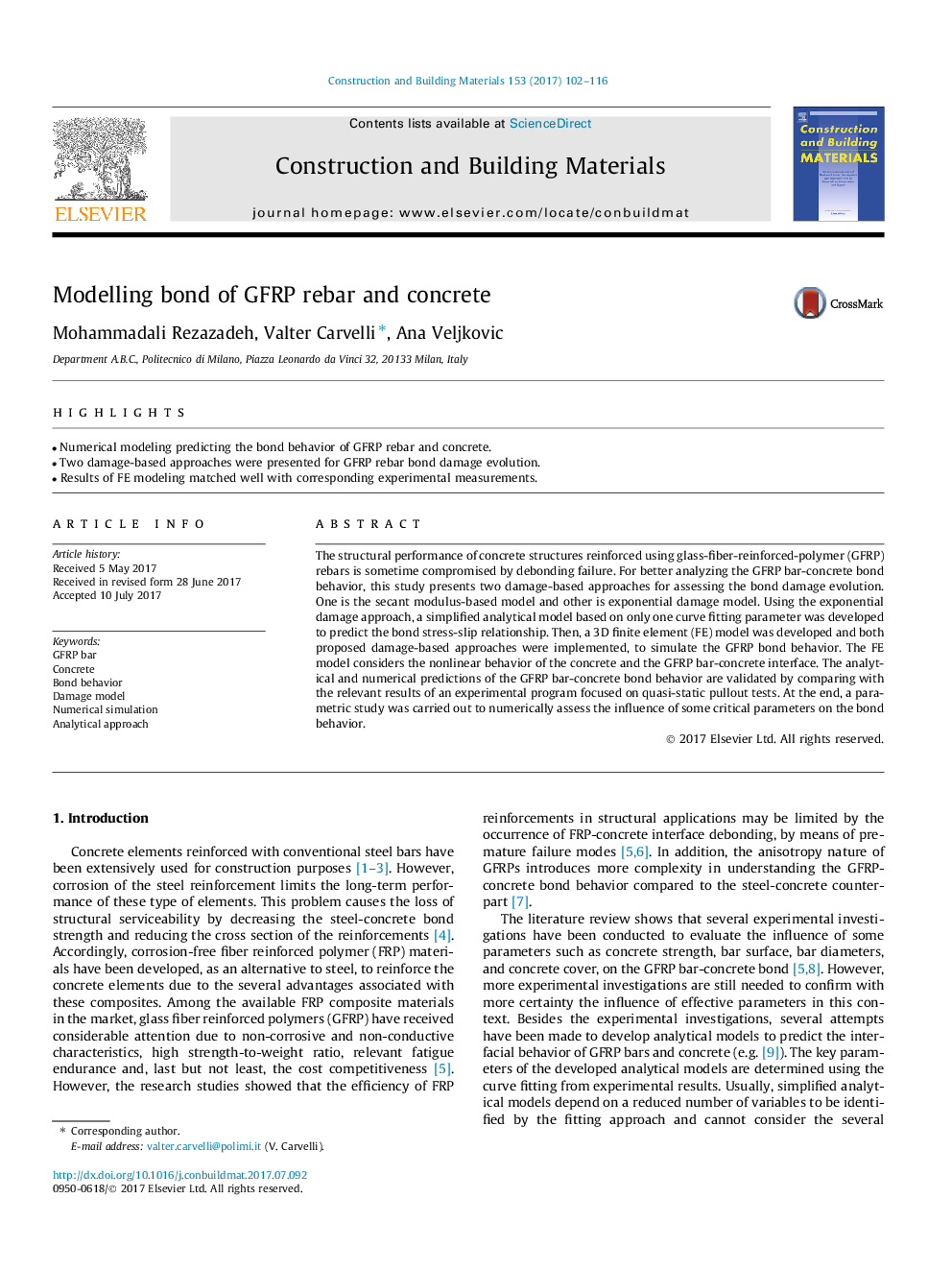| Article ID | Journal | Published Year | Pages | File Type |
|---|---|---|---|---|
| 4912958 | Construction and Building Materials | 2017 | 15 Pages |
Abstract
The structural performance of concrete structures reinforced using glass-fiber-reinforced-polymer (GFRP) rebars is sometime compromised by debonding failure. For better analyzing the GFRP bar-concrete bond behavior, this study presents two damage-based approaches for assessing the bond damage evolution. One is the secant modulus-based model and other is exponential damage model. Using the exponential damage approach, a simplified analytical model based on only one curve fitting parameter was developed to predict the bond stress-slip relationship. Then, a 3D finite element (FE) model was developed and both proposed damage-based approaches were implemented, to simulate the GFRP bond behavior. The FE model considers the nonlinear behavior of the concrete and the GFRP bar-concrete interface. The analytical and numerical predictions of the GFRP bar-concrete bond behavior are validated by comparing with the relevant results of an experimental program focused on quasi-static pullout tests. At the end, a parametric study was carried out to numerically assess the influence of some critical parameters on the bond behavior.
Related Topics
Physical Sciences and Engineering
Engineering
Civil and Structural Engineering
Authors
Mohammadali Rezazadeh, Valter Carvelli, Ana Veljkovic,
